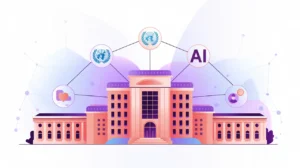Importance of Data Exfiltration
Data Exfiltration refers to the unauthorized extraction of sensitive or protected information from an AI system or its connected data sources. In the AI context, this often occurs through adversarial prompts, indirect manipulation, or technical exploits that bypass safeguards. Its importance today lies in the fact that AI systems are increasingly integrated with private datasets, making them attractive targets for attackers seeking confidential or high-value information.
For social innovation and international development, data exfiltration matters because mission-driven organizations often handle personal, health, or humanitarian data from vulnerable communities. A breach of trust through unauthorized data exposure can cause lasting harm and undermine confidence in technology-enabled programs.
Definition and Key Features
Data exfiltration can occur through several vectors: prompt manipulation, misconfigured APIs, insider threats, or system vulnerabilities. In large language models, attackers may attempt to extract training data or hidden instructions. More broadly, exfiltration threatens the integrity of both proprietary datasets and personally identifiable information.
This is not the same as data sharing, which involves authorized access under agreed rules. Nor is it equivalent to data leakage from poor anonymization practices. Exfiltration specifically refers to unauthorized, adversarial extraction.
How this Works in Practice
In practice, an attacker might trick a health chatbot into revealing confidential patient details, probe a humanitarian system for sensitive population data, or extract API keys and credentials embedded in connected systems. Defenses include prompt hardening, strict access controls, encryption, anomaly detection, and red-teaming exercises designed to expose vulnerabilities.
Challenges include the evolving creativity of attackers, the difficulty of patching large AI systems quickly, and the risk of over-restricting models in ways that reduce usability. Balancing openness with security is a persistent tension.
Implications for Social Innovators
Data exfiltration is a critical concern for mission-driven organizations. Health programs must safeguard electronic medical records and diagnostic data from unauthorized access. Education initiatives that use AI learning platforms must protect student information. Humanitarian agencies managing refugee registration or aid distribution data face high stakes if sensitive records are extracted. Civil society groups often push for stronger safeguards, governance, and accountability to protect community data.
By anticipating and defending against data exfiltration, organizations can secure sensitive information, preserve trust, and ensure AI systems serve their missions safely.







